
24/7 Wall St. Insights:
- The Astros II is one of the newest and most advanced MLRS to come out of South America
- Although the Astros II was originally introduced in the 1980s, it has undergone improvements and advancements over the years to incorporate up-to-date technology
- This weapons system has even received international recognition from countries like Saudi Arabia and Malaysia that have already placed orders for the Astros II
- Also: Discover “The Next NVIDIA”
The Astros II is one of the newest and most advanced Multiple Launch Rocket System (MLRS) to come out of South America. Developed by Brazil’s Avibras, the Astros II is a domestically designed and produced system that can deliver devastating firepower. Unlike many of its counterparts, the Astros II can launch a wide range of rocket calibers and tactical missiles, giving it a unique edge on the battlefield. (This South American country has the continent’s strongest military, and it’s not even close.)
Although the Astros II was originally introduced in the 1980s, it has undergone improvements and advancements over the years to incorporate up-to-date technology. Its latest variant, the MK6, is a huge leap forward in both firepower and technology. This system is mounted on a wheeled platform enabling improved mobility across various types of terrain.
This weapons system has even received international recognition from countries like Saudi Arabia and Malaysia that have already placed orders for the Astros II. (MLRS are the next evolution in warfare in Eastern Europe.)
Other nations on the South American continent aren’t without their own MLRS units, although some don’t have any at all. Countries like Argentina and Peru maintain their own arsenals of these advanced rocket launch systems. 24/7 Wall St. is taking a closer look South American nations and which ones have the biggest MLRS forces.
To identify the South American countries with the most MLRS units, 24/7 Wall St. reviewed 2024 Military Strength Ranking from Global Firepower, an annually updated defense-related statistics website with information on 145 countries. Countries were ranked on the total number of MLRS in their arsenal. We included supplemental information regarding the total military vehicles, artillery and tanks, as well as each country’s overall military strength score. Nations that do not have any MLRS in their arsenal were excluded.
Here is a look at the South American countries with the biggest MLRS forces:
Why Are We Covering This?
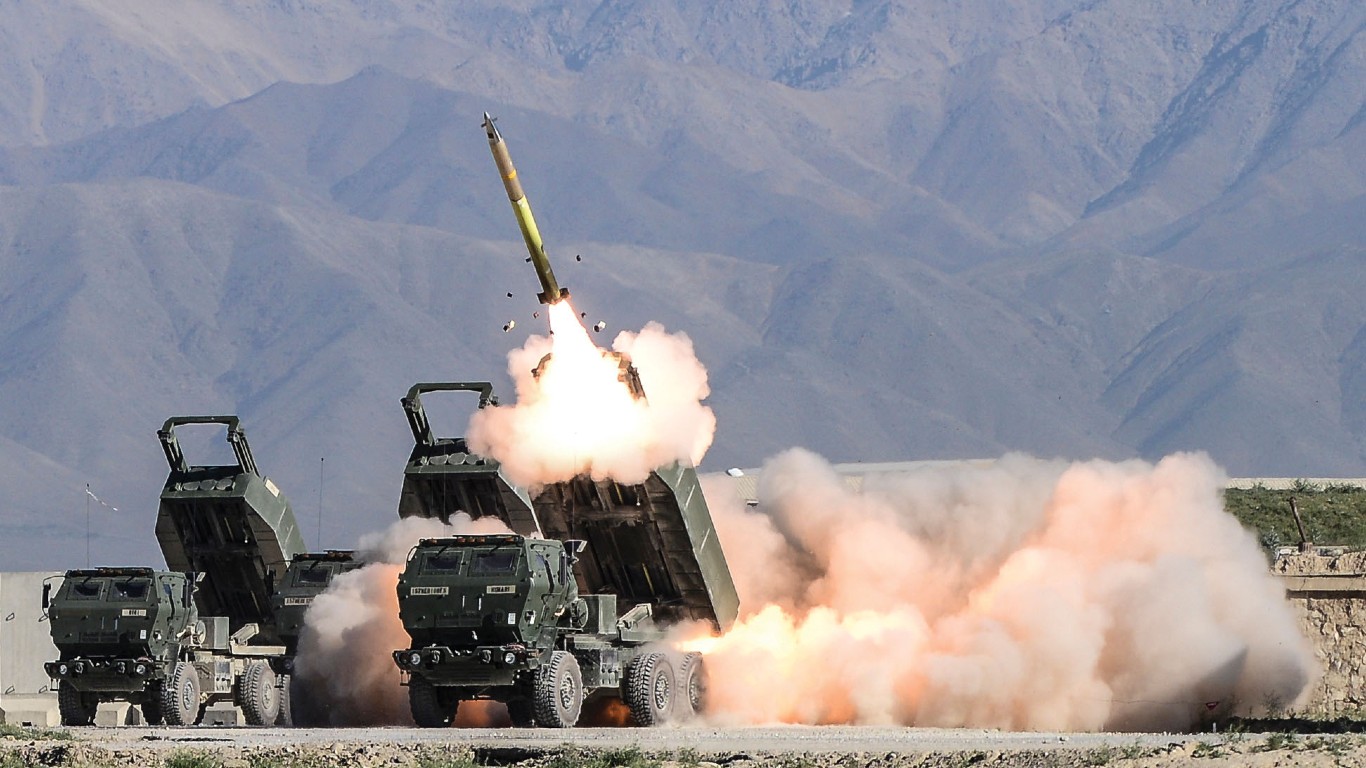
Understanding the military dynamics of South America is important considering the region’s evolving geopolitical landscape and its strategic importance. Historically, South America has experienced internal conflicts and border tensions, but its military presence is now key in maintaining regional stability and security.
7. Uruguay
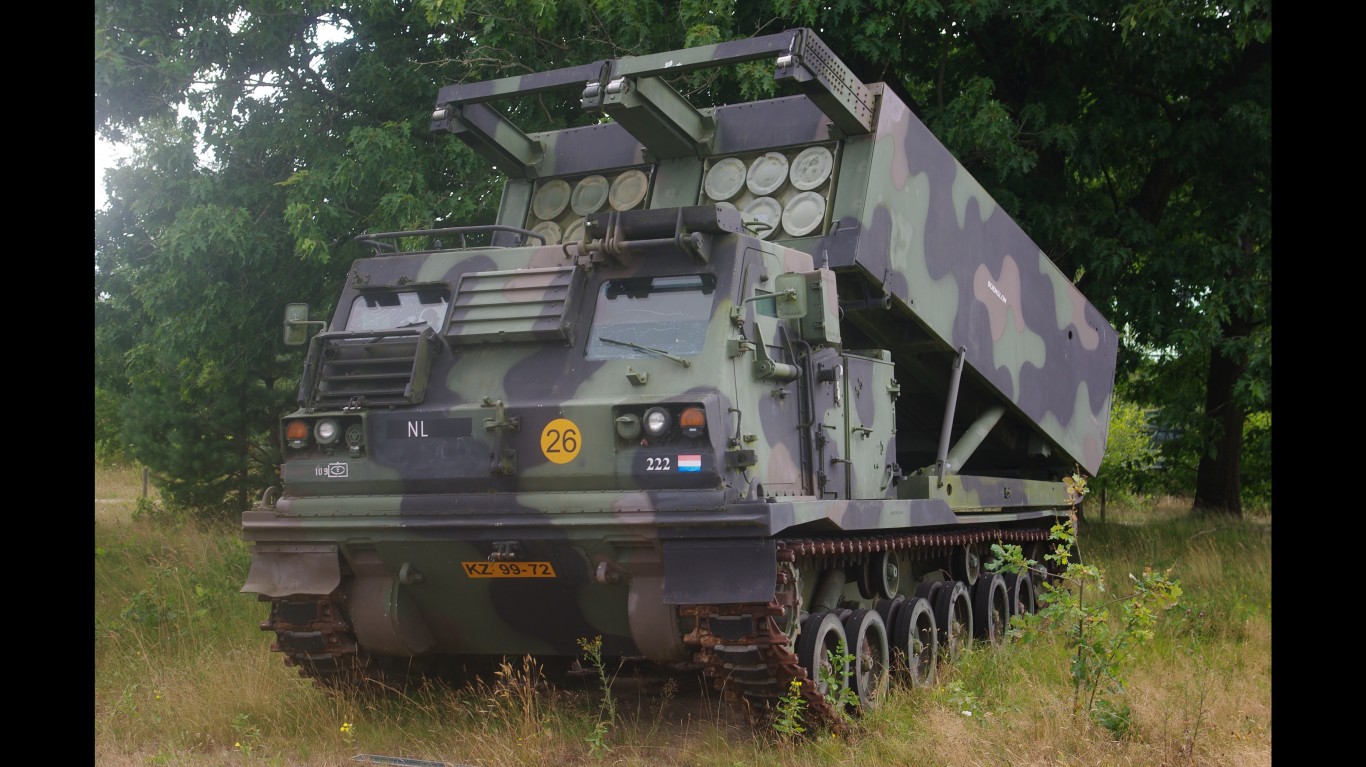
- Total MLRS: 4
- Total tanks: 39
- Total artillery: 77
- Total military vehicles: 3,993
- Military strength score and world rank:1.9695 – #96 out of 145
Uruguay owns a handful of MLRS units and total of 77 artillery units with the majority of those being towed units. The country has about 4,000 military vehicles and 40 tanks. It has a standing army of about 25,000 active personnel.
In the 20th century, Uruguay was subject to military rule, most notably during the Bordaberry dictatorship starting in 1973, when the military seized control of the government in response to political instability. Democracy was restored in 1985, and like Suriname, the government moved to reduce the influence of the military.
One of the main shifts from the militaristic rule was repurposing Uruguay’s armed forces to a more passive and defensive role. Instead of trying to project power, Uruguay’s military is typically more involved in disaster relief, peacekeeping missions, and internal security.
6. Chile
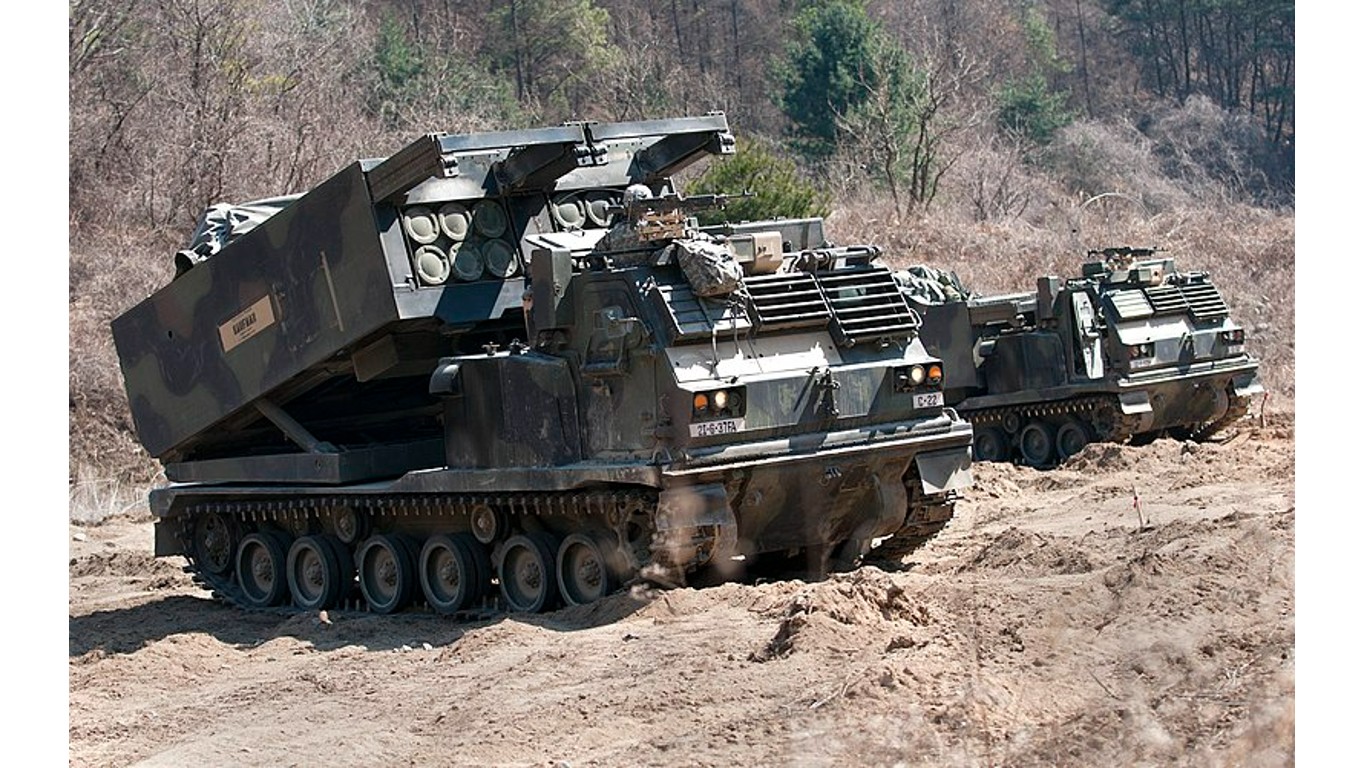
- Total MLRS: 20
- Total tanks: 270
- Total artillery: 273
- Total military vehicles: 9,492
- Military strength score and world rank:0.8128 – #52 out of 145
Chile’s military has around 80,000 active personnel in total. In terms of artillery, Chile has 273 units, with the majority being towed. It has 270 tanks and 20 MLRS units, as well as about 9,500 military vehicles total.
Chile also operates one of the larger air forces in South America with nearly 300 military aircraft in its fleet. Like its neighbors, Chile has an interesting history of military and politics.
Known as one of the most brutal dictators of South America, General Augusto Pinochet took control of the Chilean government in 1973. Pinochet ruled as a military dictator until 1990, with many human rights abuses and political repression. The military also saw a massive expansion during this time adding tanks and aircraft to its arsenal.
Pinochet was also famous for his involvement in Operation Condor, where dictatorships across the continent moved to snuff out or suppress their political rivals in a collaborative effort. This covert operation would ultimately strengthen the military’s grasp over Chile and any dissidents that might oppose it.
After Pinochet lost power in 1990, the military was relegated to a much lesser role. Since then, the military has focused more on national security as well as disaster relief, especially since Chile is prone to natural disasters like earthquakes and tsunamis.
5. Argentina
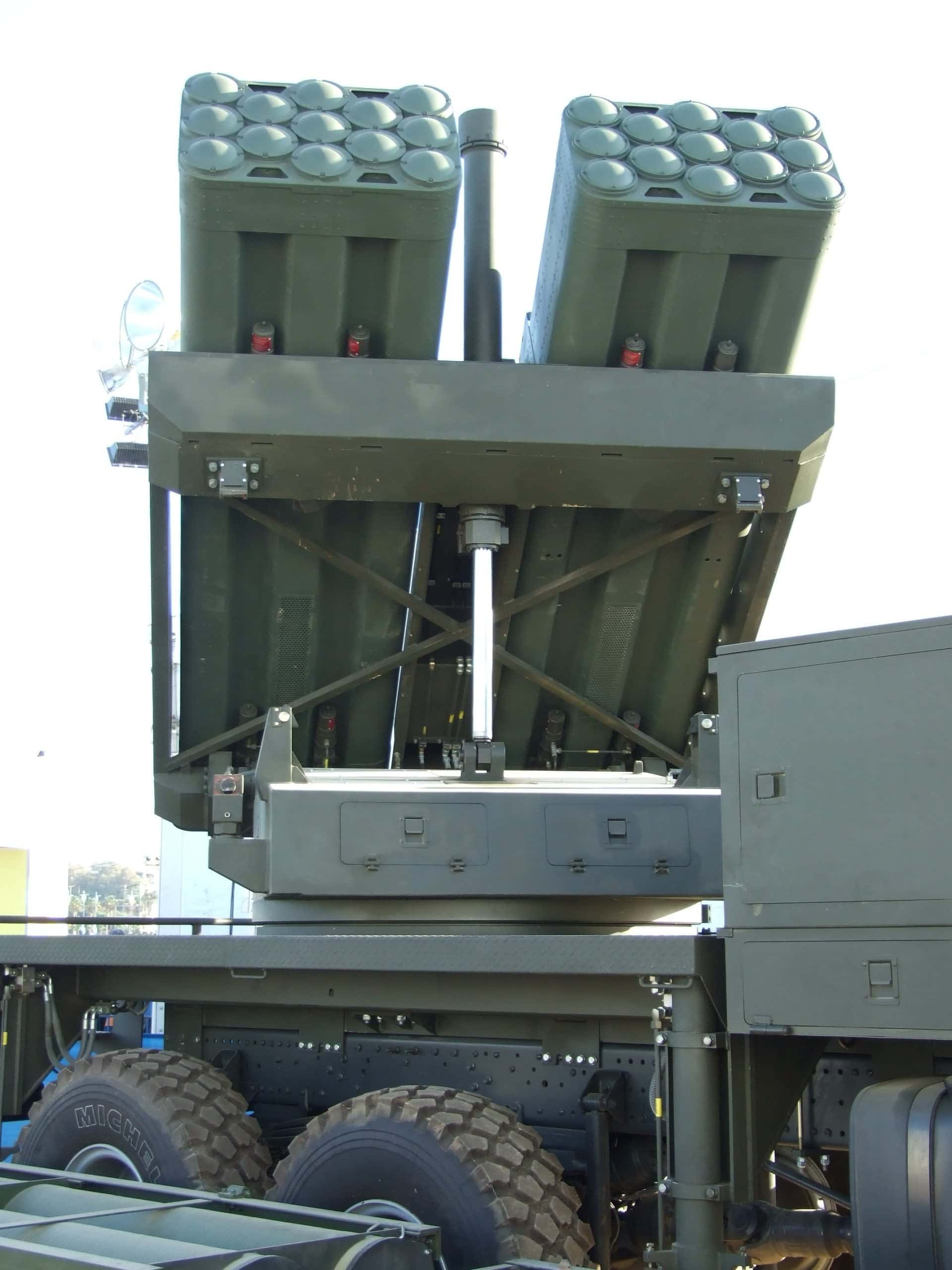
- Total MLRS: 26
- Total tanks: 348
- Total artillery: 222
- Total military vehicles: 21,724
- Military strength score and world rank:0.3823 – #28 out of 145
In total, Argentina’s armed forces are considered the second strongest on the continent. It boasts nearly 110,000 active personnel and 229 military aircraft. On the world stage, Argentina ranks in the top 30 armed forces in terms of military strength.
In terms of its ground forces, Argentina has 222 total artillery units, nearly 350 tanks and 26 MLRS units.
Throughout the 20th century, Argentina suffered through multiple wars and dictatorships. This largely crafted how the Argentine Armed Forces handles itself today.
One of the most infamous instances was the Dirty War that took place from 1976 to 1983. General Jorge Rafael Videla overthrew the government and, through the military, targeted people it suspected of opposing the government, resulting in the disappearance, torture, and death of thousands. This was part of a larger collaboration, Operation Condor, between dictatorships across the continent.
Ultimately, this dictatorship would come crashing down when Argentina fought the Falklands War against the United Kingdom. The defeat was a major blow to the dictatorship and resulted in the people turning against the government and back towards democratic rule. With this push, the military waned in influence in the decades to come.
4. Ecuador
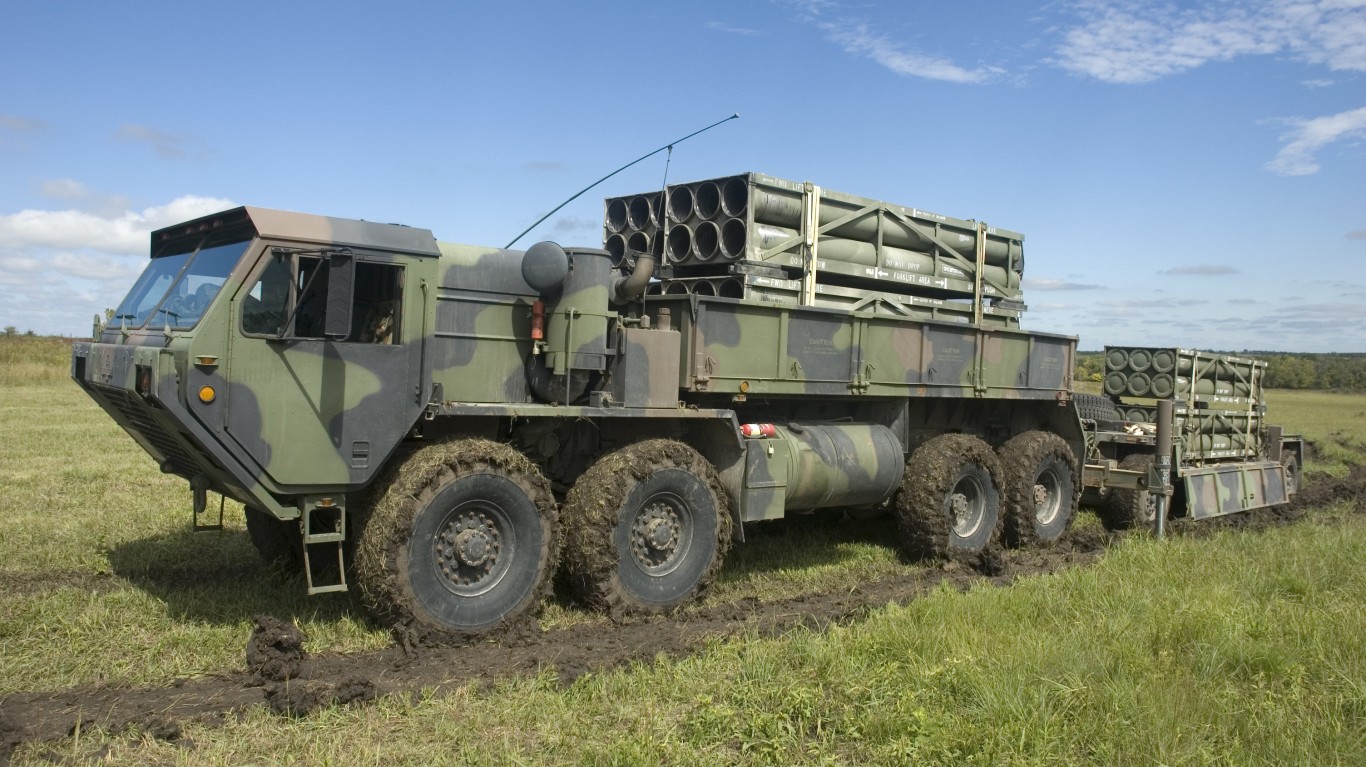
- Total MLRS: 35
- Total tanks: 55
- Total artillery: 155
- Total military vehicles: 5,662
- Military strength score and world rank:1.2388 – #72 out of 145
For a country with a population of 18 million, Ecuador operates a fairly sizable military force with 41,000 active personnel. It has over 155 artillery units with the majority being towed. Ecuador has 55 tanks and 35 MLRS units, which fall into its total of 5,600 military vehicles.
Throughout the 20th century, Ecuador experienced multiple military coups, most notably in 1972 when General Guillermo Rodríguez Lara took control of the government. His rule lasted until 1979, when the country shifted back to democratic rule. However, like many other South American countries, the people were wary of military power.
Today, the main responsibilities of Ecuador’s military are protecting its national sovereignty, addressing security threats like drug trafficking, and providing disaster relief where needed.
3. Venezuela

- Total MLRS: 36
- Total tanks: 180
- Total artillery: 164
- Total military vehicles: 14,966
- Military strength score and world rank:0.9447 – #57 out of 145
Venezuela has nearly 110,000 active military personnel, but this is dwarfed by its paramilitary forces numbering around 220,000. Much of these paramilitary forces like the Bolivarian Militia are made up of citizens. In terms of artillery, Venezuela has 164 total units that are fairly split between towed and self-propelled. The country has a 180 tanks and 36 MLRS units, which help make up its nearly 15,000 military vehicles.
This country in particular is an interesting case study in militaries in South America. Some might argue that Venezuela is still under military rule, and that it has not returned to democratic rule like other nations on the continent.
Although the country had returned to democratic rule in the 1950s after suffering a number of coups and instability, it would ultimately revert back in 1999 when Hugo Chavez rose to power. Chavez was a former military officer and gained popularity with the citizenry, enough to create a citizen militia that blurred the lines between politics and military.
Chavez’s successor, Nicolas Maduro, is currently in power and he is seeking a third term as the President of Venezuela. Again, critics will argue the electoral process in Venezuela is less than transparent. However, one thing Maduro has done is grow the military.
2. Peru

- Total MLRS: 73
- Total tanks: 261
- Total artillery: 298
- Total military vehicles: 7,896
- Military strength score and world rank:0.8475 – #53 out of 145
Currently, the Peruvian military consists of 120,000 active personnel. It operates over 250 aircraft and nearly 8,000 military vehicles. In terms of its artillery strength it comes in second in South America with nearly 300 units. It also have over 260 tanks and 73 MLRS units.
Peru has a long military history, including several coups and times of military rule. These events helped shape the Peruvian Armed Forces into what they are today, with more of a focus on security and defense. Even though the military now has a smaller role, it is still one of the stronger forces in South America.
General Juan Velasco Alvarado held power over the country between 1968 and 1980, ultimately implementing land reforms and nationalizing key industries. Ironically, Velasco was overthrown in another military coup by General Francisco Morales Bermudez, who actually moved the country back towards a democracy.
In recent decades, the Peruvian military was involved in counterinsurgency operations, notably against the Shining Path, a far-left guerilla group. While the government eventually cut down the group’s influence, the Peruvian military continues to combat what’s left of the group in remote areas of the country. Outside of that, Peru’s military primarily operates in peacekeeping missions and disaster relief.
1. Brazil

- Total MLRS: 78
- Total tanks: 469
- Total artillery: 632
- Total military vehicles: 44,044
- Military strength score and world rank:0.1944 – #12 out of 145
Currently, Brazil operates the largest artillery force in South America, far outstripping the runner up with more than twice the numbers. It has 632 artillery units, 469 tanks, and 78 MLRS units.
Out of all the countries in South America, Brazil is considered to have the strongest military force. Officially known as the Brazilian Armed Forces, it consists of three branches, Army, Navy, and Air Force. Like every other nation on this list, Brazil had its brush with coups and military dictatorships.
One of the most important periods in time for this country began in 1964, when the military took control of the government. In the wake of the coup, the military regime carried out countless human rights abuses and censored its people. By 1985, Brazil returned to a civilian government but unlike its neighbors, the military still held significant sway for some time.
Now, Brazil’s military is primarily focused on national defense. It has conducted peacekeeping missions with the United Nations to countries like Haiti and Lebanon. The military also works to protect the Amazon rainforest from illegal activities like deforestation or drug trafficking.
Take This Retirement Quiz To Get Matched With An Advisor Now (Sponsored)
Are you ready for retirement? Planning for retirement can be overwhelming, that’s why it could be a good idea to speak to a fiduciary financial advisor about your goals today.
Start by taking this retirement quiz right here from SmartAsset that will match you with up to 3 financial advisors that serve your area and beyond in 5 minutes. Smart Asset is now matching over 50,000 people a month.
Click here now to get started.
Thank you for reading! Have some feedback for us?
Contact the 24/7 Wall St. editorial team.